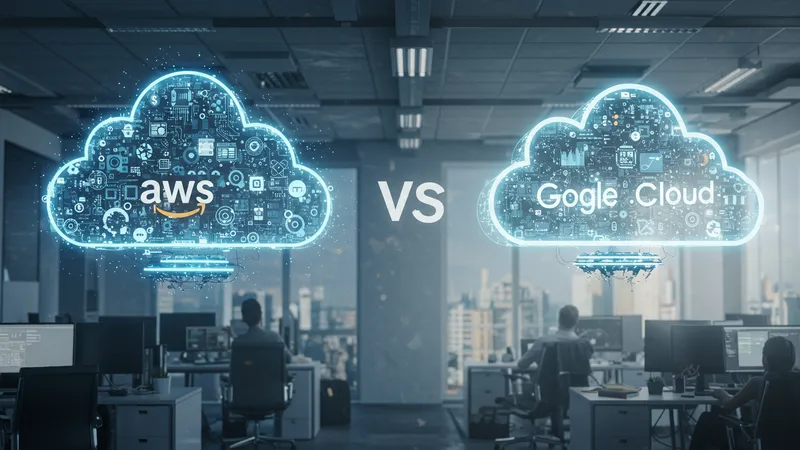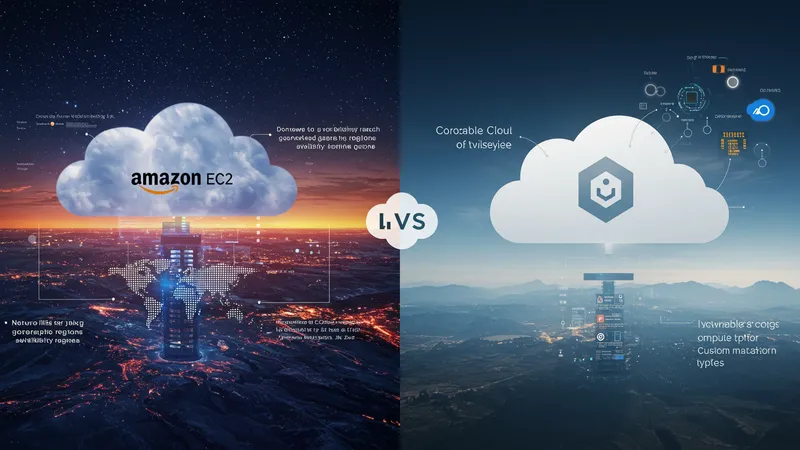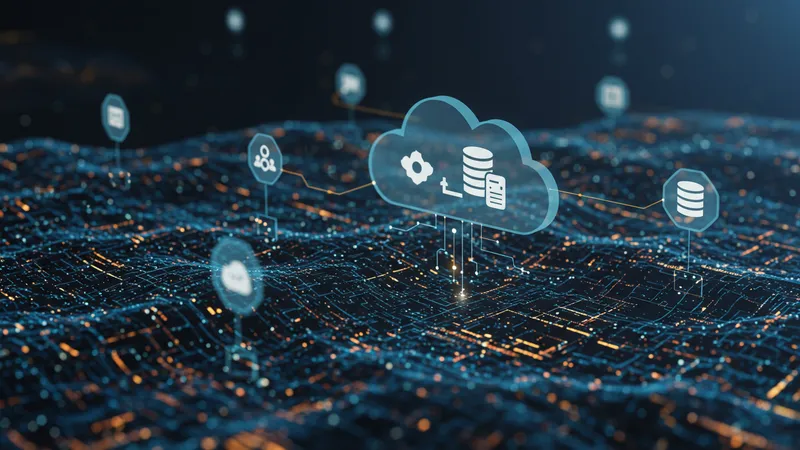

Modern businesses rely heavily on cloud computing to fuel their growth, agility, and innovation. Organizations selecting a cloud provider are often met with two tech titans—Amazon Web Services (AWS) and Google Cloud Platform (GCP). Both offer vast digital infrastructure, enabling everything from scalable data storage and virtual servers to AI-powered analytics. The choice between AWS and Google Cloud isn't just technical; it defines how a company runs, manages costs, builds resilient apps, and prepares for a digital future.
Comparing AWS and Google Cloud means looking closely at their service portfolios, pricing strategies, performance, and philosophy around innovation. AWS, the earliest large-scale adopter, has amassed the largest catalog of services and a proven reputation for reliability. Google Cloud, meanwhile, leverages its search and data heritage, providing uniquely advanced tools for analytics and machine learning. In competitive terms, the decision process is nuanced—organizations must evaluate not only what’s offered but also how those offerings impact actual business outcomes.

At the core of AWS and Google Cloud’s rivalry are key categories—compute, storage, serverless, managed databases, and AI. While AWS remains the largest cloud provider, Google Cloud consistently secures sector-leading praise for data and machine learning capabilities. Each platform’s detailed offerings—and their real-world pricing—give organizations room for granular cost optimization and performance tuning.
Compute services, like Amazon EC2 and Google Compute Engine, make it possible to customize virtual machines to the workload, choosing from diverse instance types and cutting-edge hardware, such as NVIDIA GPUs or custom Google TPUs. These are foundational for hosting any internet-scale service, from e-commerce to global SaaS applications.
Storage wars are equally intense. S3 and Google Cloud Storage both promise high durability and seamless integration with analytics, backup, or archival workflows. But subtle pricing differences and geographic availability often sway decisions—especially at massive scale.
The emergence of serverless computing, showcased by AWS Lambda and Google Cloud Functions, empowers engineering teams to pay only for code execution—no need to manage underlying servers. This innovation has shifted the economics of launching microservices or processing unpredictable workloads.
The deeper details reveal even more valuable insights ahead—including nuanced pricing structures, regional presence, customer support approaches, and evolving SaaS innovations...
The heart of any cloud platform is its compute offering. AWS’s Amazon EC2 and Google Cloud’s Compute Engine serve as flexible foundations for virtualized infrastructure. Both platforms provide extensive control over CPU, memory, storage options, and network performance. EC2 pioneered pay-as-you-go computing, letting users scale resources almost instantly; Compute Engine matches this with a focus on customizable VM configurations and automatic sustained use discounts, appealing to cost-conscious workloads.

One significant advantage for AWS EC2 is its unmatched global data center reach—more regions and availability zones, delivering ultra-low-latency performance for a wider audience. Google Compute Engine, while catching up fast, emphasizes flexibility, offering features like custom machine types that enable tailored hardware profiles for specialized needs, such as large analytical or AI projects. Teams needing specialty hardware, such as NVIDIA GPUs or Google’s TPUs, find options on both platforms, but Google’s integration with its AI ecosystem can be a key differentiator.
Punishing peak traffic and sudden usage spikes put cloud infrastructure to the test. EC2 instances can be reserved, spot-priced, or run on-demand, enabling precise cost management strategies. Google Compute Engine counters with automatic scaling groups and transparent, predictable pricing. Both vendors have made strong advances in VM boot speed, live migration, and preemptible (spot) instances ideal for budget-sensitive, fault-tolerant workloads.
Choosing between EC2 and Compute Engine often centers on ecosystem compatibility and operational priorities. Teams embedded in AWS’s tooling appreciate deep integration with other services (like Lambda and S3), while data-driven teams may prefer Google’s streamlined APIs and built-in analytics hooks. Either way, these compute engines underpin the digital transformation journeys of companies around the world.
Storage is fundamental for cloud-native architecture, and both AWS and Google Cloud offer robust object storage services—Amazon S3 and Google Cloud Storage, respectively. S3 is renowned for its 99.999999999% durability, massive scalability, and broad integration with AWS services. Its tiered pricing structure, including Standard, Infrequent Access, and Glacier, supports cost optimization by automatically transitioning data to lower-cost tiers as needed.

Google Cloud Storage rivals S3 with equally high durability and global reach. A standout feature for Google is its seamless multi-region storage that provides additional resilience and strong performance for distributed applications. Both platforms provide lifecycle management policies, easy archiving, and support for data compliance—vital for regulated industries and data privacy-sensitive organizations.
Pricing is a nuanced area of comparison. S3’s Standard Storage starts at $0.023 per GB/month, while Google Cloud Storage is slightly less at $0.020 for its Standard tier. However, costs can fluctuate depending on data retrieval, regional considerations, and access patterns. Organizations storing petabytes must evaluate granular usage metrics to optimize bills, leveraging each platform’s pricing calculators and monitoring tools.
Both S3 and Google Cloud Storage are deeply integrated with their own analytics, backup, and disaster recovery tools. That means companies can not only store, but also gain actionable insight from massive datasets. As cloud strategies evolve, the flexibility to support AI and data lake architectures gives both services a strategic edge.
The cloud revolutionized development by introducing managed and serverless services—shifting the operational burden from users to providers. AWS Lambda and Google Cloud Functions allow developers to execute code in response to events, scaling from zero to peak demand automatically. Both offer generous free tiers and only charge for actual usage, enabling highly efficient application architectures.

Amazon’s managed database service, RDS, and Google’s answer, Cloud SQL, both eliminate much of the complexity of provisioning, patching, and maintaining databases. They natively support popular engines like MySQL, PostgreSQL, and SQL Server. AWS RDS is lauded for its wider regional coverage and availability features, while Google Cloud SQL focuses on streamlined setup and integration with Google’s analytics stack.
In practice, Lambda and Cloud Functions differ most in developer experience and ecosystem fit. Lambda provides deeper connection to the sprawling AWS ecosystem and a mature, language-rich runtime selection. Google Cloud Functions, on the other hand, fits natively with Google’s cloud-native CI/CD tools and offers convenient tie-ins with Firebase for mobile and web apps.
Managed databases are judged by uptime, recovery, scaling, and pricing transparency. RDS often appeals to enterprises migrating from on-premises, seeking maximum reliability, whereas Cloud SQL is a favorite among digital-natives valuing usability and integration with Google’s broader machine learning and analytics tools.
When it comes to artificial intelligence and analytics, AWS and Google Cloud each play to remarkable strengths. Amazon Rekognition leverages deep learning for image and video analysis—enabling automated facial analysis, label detection, and content moderation at scale. Its API is beloved by companies rolling out visual recognition features in sectors from media to public safety.

Google Cloud Vision API offers similar computer vision capabilities, adding world-class performance in optical character recognition (OCR) and broad support for multilanguage text extraction. With Google’s history in search and deep learning, its Vision API is a standard choice for projects needing nuanced, multilingual insights. Both APIs are pay-as-you-go, with volume discounts, and can handle millions of requests per day.
The innovation race goes deeper: AWS and Google Cloud also invest heavily in advanced AI services—from natural language processing to translation and predictive analytics. Integration with cloud storage, serverless, and analytics means teams can rapidly bootstrap intelligent applications using prebuilt APIs or custom models trained in Amazon SageMaker or Google AI Platform.
In the evolving landscape of machine learning, AWS’s breadth of services is attractive for all-in-one cloud adoption, while Google Cloud continues to raise the bar for data-driven features through industry-leading AI research. Organizations can future-proof projects by leveraging either platform’s growing portfolio of AI tools, selecting the best fit for workload, budget, and innovation needs.